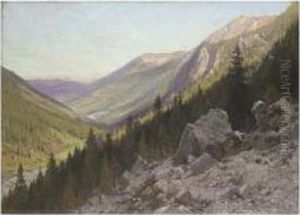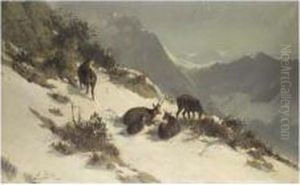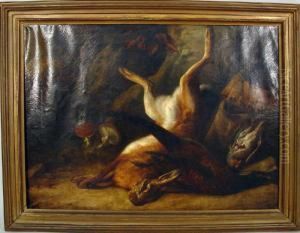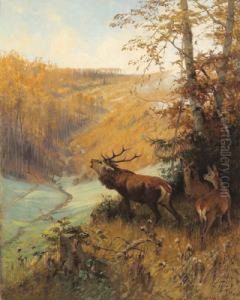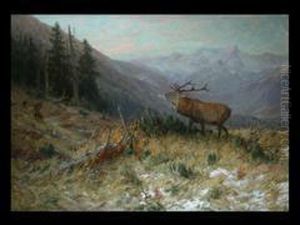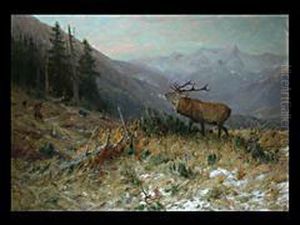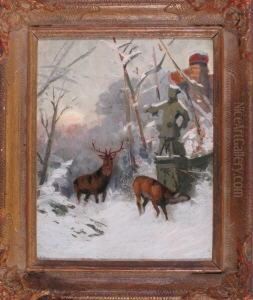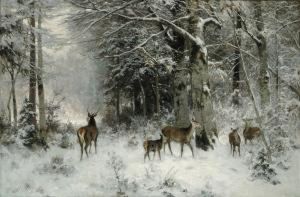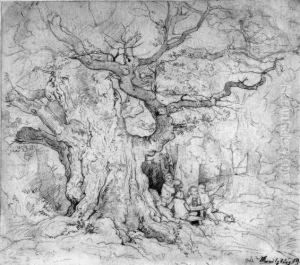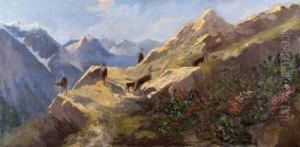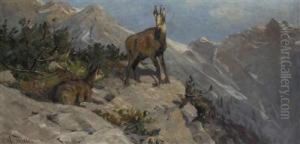Arthur Thiele Paintings
Arthur Thiele was a noted German painter and illustrator, renowned for his distinct style and contribution to the world of art in the late 19th and early 20th centuries. Born in Leipzig, Germany, on October 14, 1841, Thiele showed an early interest in art, which led him to pursue his passion formally. He studied at the Leipzig Academy of Fine Arts, where he honed his skills and developed a unique artistic voice that would later define his career.
Arthur Thiele's work spanned various themes, including landscapes, marine scenes, and animal paintings. However, he is perhaps best remembered for his whimsical and humorous postcards, which gained widespread popularity. These postcards, often featuring cats and other animals in anthropomorphic poses and situations, showcased Thiele's keen observation and ability to capture the essence of his subjects with both accuracy and humor.
Throughout his career, Thiele's art was characterized by its fine detail, vibrant colors, and a lively portrayal of his subjects. His ability to evoke emotion and narrative through his paintings and illustrations earned him recognition not only in Germany but across Europe. Thiele's work was widely exhibited during his lifetime, and he received numerous commissions from patrons who were drawn to his distinctive style.
Despite his success, Arthur Thiele's life was not without challenges. The socio-political upheavals of the early 20th century, including World War I, impacted the art world in Germany and affected Thiele's career. Nevertheless, he continued to create and contribute to the artistic community until his death in Munich, Germany, on February 26, 1919.
Arthur Thiele's legacy lives on through his art, which continues to be celebrated for its creativity, wit, and artistic excellence. His contributions to the field of illustration and painting remain significant, inspiring future generations of artists to explore humor and observation in their work. Thiele's life and career offer a fascinating glimpse into the world of late 19th and early 20th-century European art, reflecting the cultural, social, and political changes of his time.
